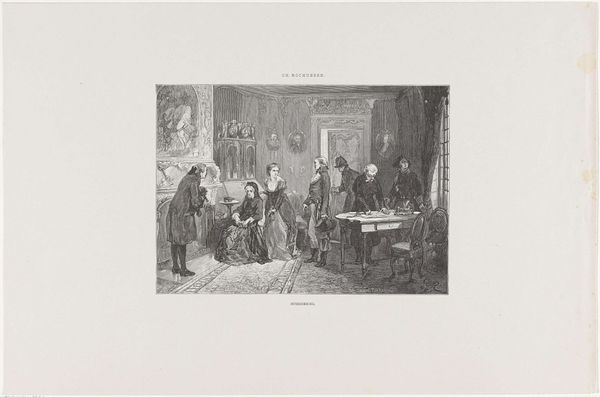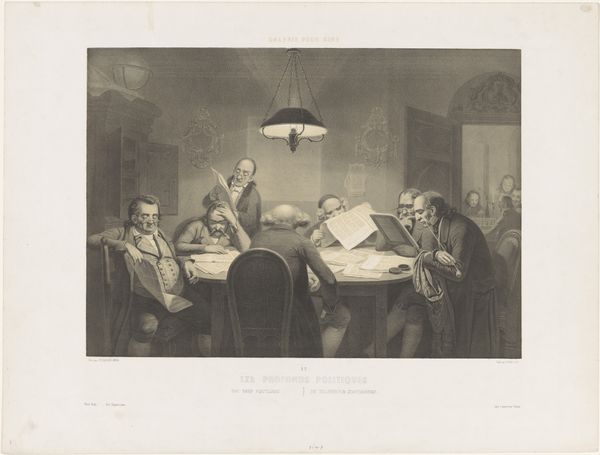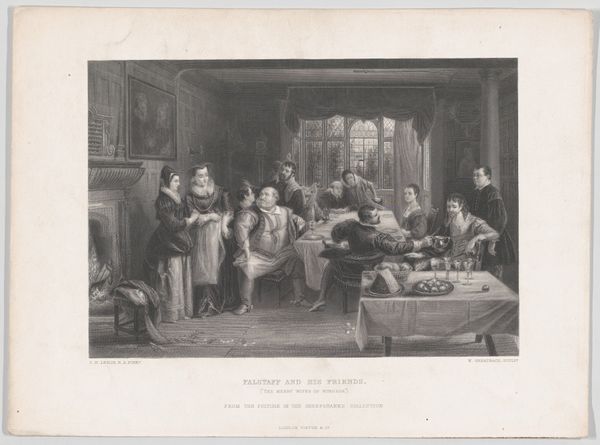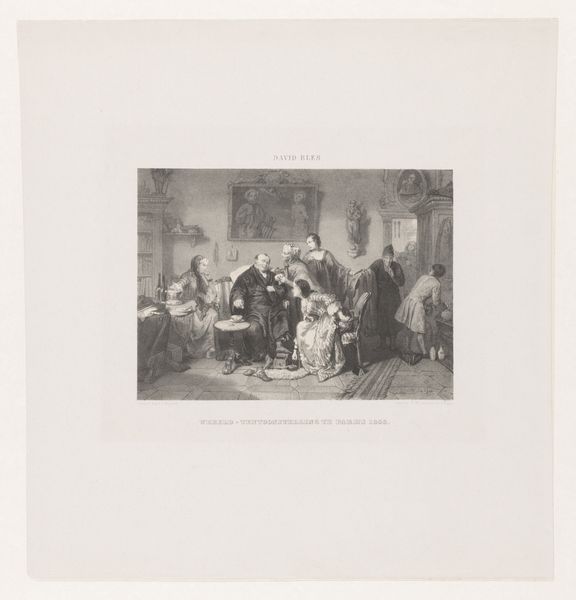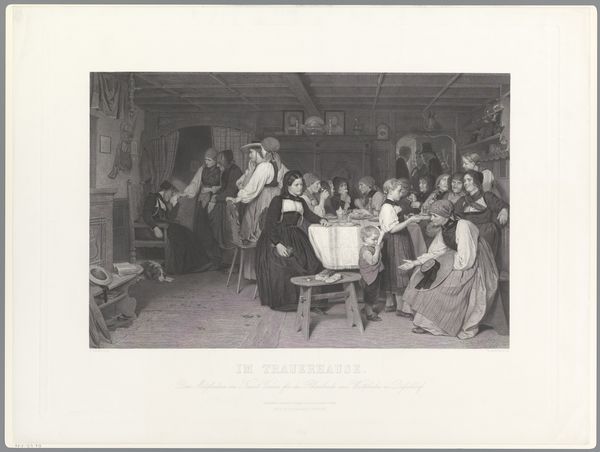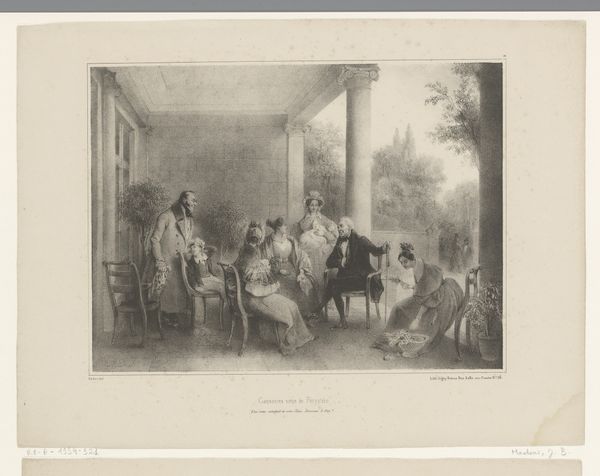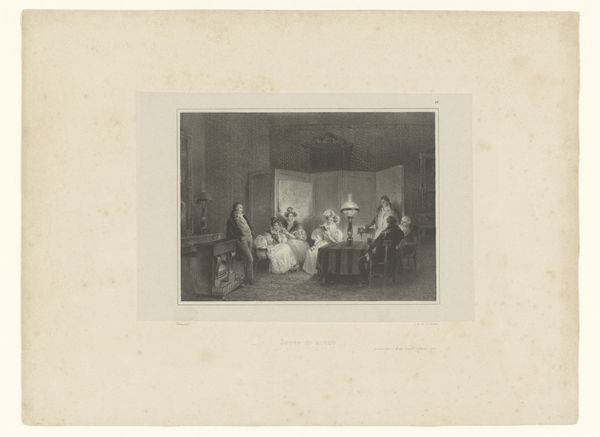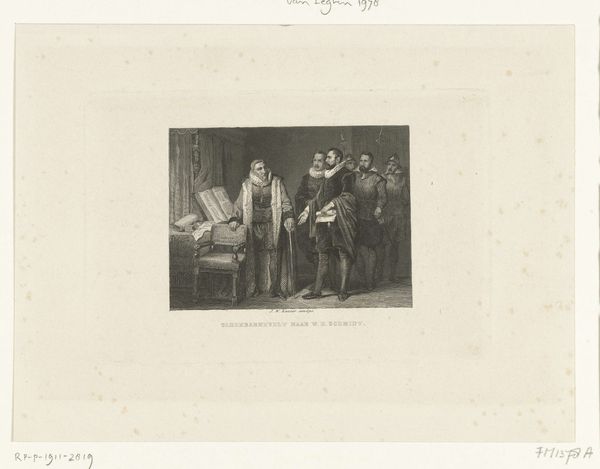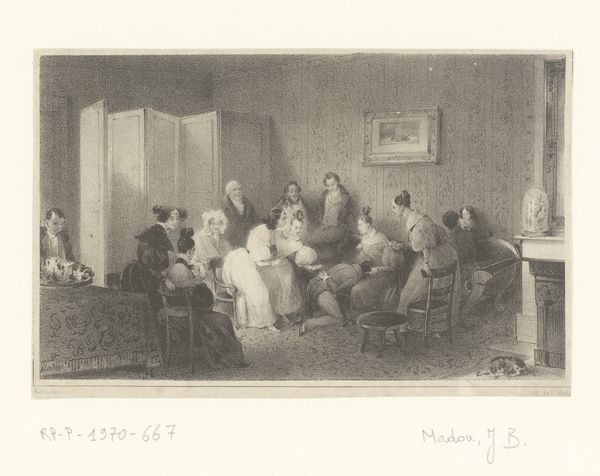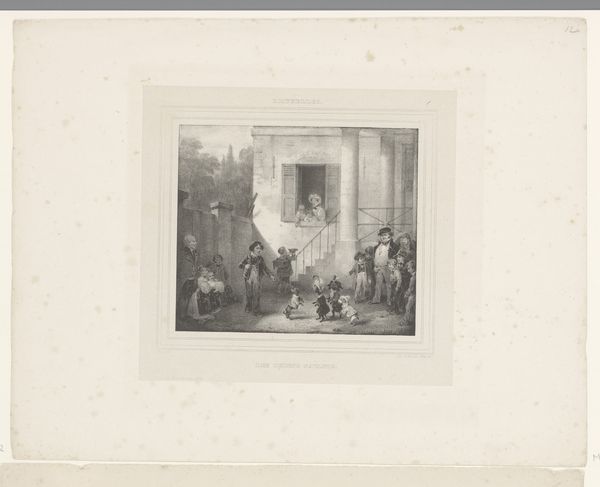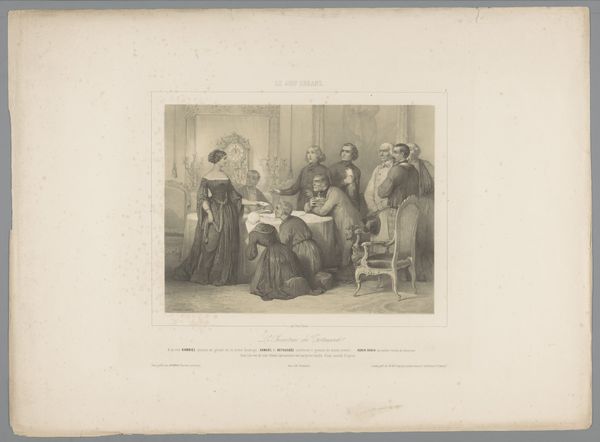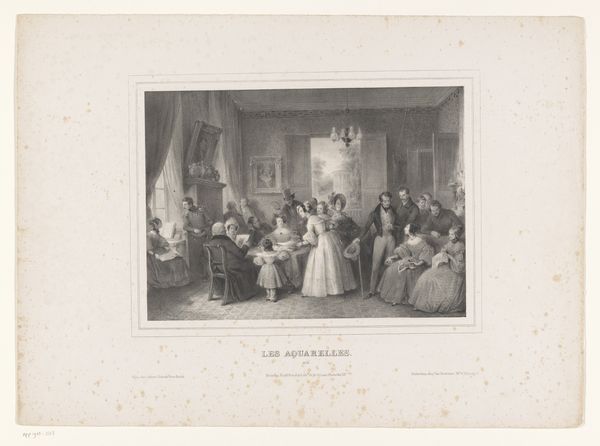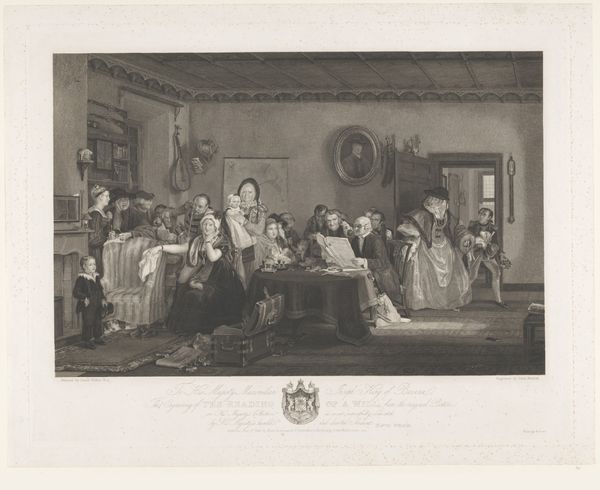
print, engraving
#
portrait
#
16_19th-century
# print
#
group-portraits
#
genre-painting
#
engraving
#
realism
Dimensions: height 374 mm, width 444 mm
Copyright: Rijks Museum: Open Domain
Curator: Here we have "Huiszoeking", a print created sometime between 1869 and 1886, credited to Dirk Jurriaan Sluyter. It is currently held in the collection of the Rijksmuseum. Editor: My immediate reaction is a sense of intrusion and tension, a drama unfolding within a contained domestic space. The stark grayscale palette contributes significantly to this somber mood. Curator: Indeed, the composition guides the eye deliberately. Observe how the subjects are arranged— the seated women on the left countered by the group examining documents at the table on the right, creating a visual imbalance that mirrors the disruption implied in the title: “House Search.” The textures, achieved through engraving, render the scene with a certain precision characteristic of Realism. Editor: Considering the socio-political context, this image speaks to a period marked by state surveillance and challenges to personal liberty. "Huiszoeking" would thus enter into the genre tradition to depict social ills that needed to be addressed during that period, such as poverty and justice. Curator: Agreed. Structurally, the interior serves almost as a stage set. The doorway at the back invites us to consider other spaces and what might lie beyond this immediate conflict. It uses contrast so very well, notice how the artist strategically illuminates parts of figures or elements to achieve an arresting tenebrism, such as in the ladies' outfits in opposition with the bare walls. Editor: The print's circulation also matters. As a readily reproducible medium, it enabled a wider audience to confront uncomfortable aspects of contemporary society. The controlled chaos within the domestic interior becomes a broader statement on societal control, I feel. Curator: The use of light and shadow to articulate emotional states contributes further layers of meaning to the whole composition, too. Note how the relative composure of those being searched stands in stark opposition to the invasive activity. Editor: Exactly, this examination leads us into thinking about broader questions surrounding the power dynamics inherent within the relationship between citizens and the authorities. It's a really provocative work from that period that has lost none of its capacity to shock. Curator: I concur entirely; seeing how such themes were depicted materially underscores not just an awareness but also a criticality aimed to elicit tangible change in those viewing it. Editor: I'm glad we've explored this. Now I depart this encounter thinking less about artistic technicalities than reflecting on themes pertinent still to our present realities.
Comments
No comments
Be the first to comment and join the conversation on the ultimate creative platform.
